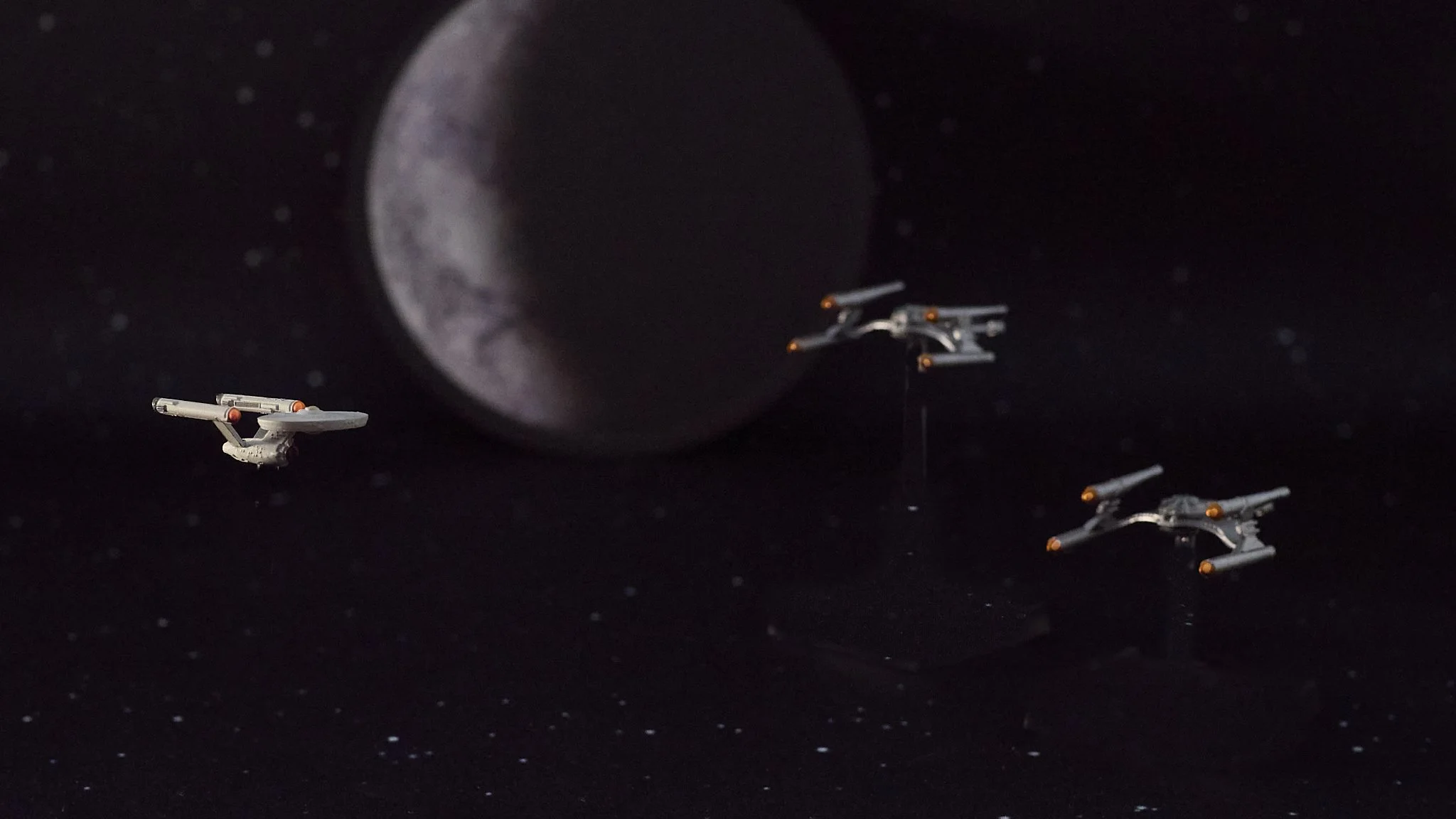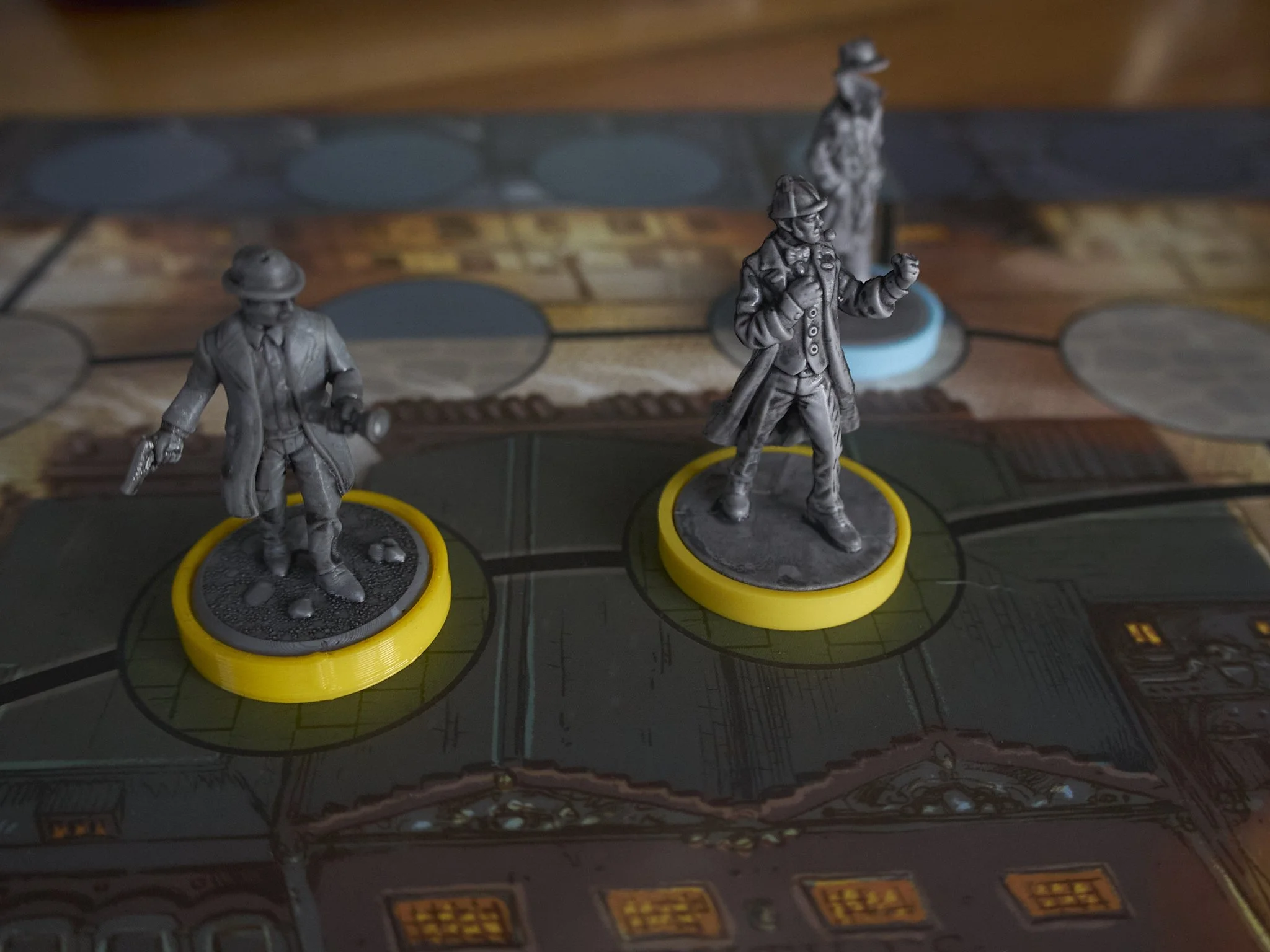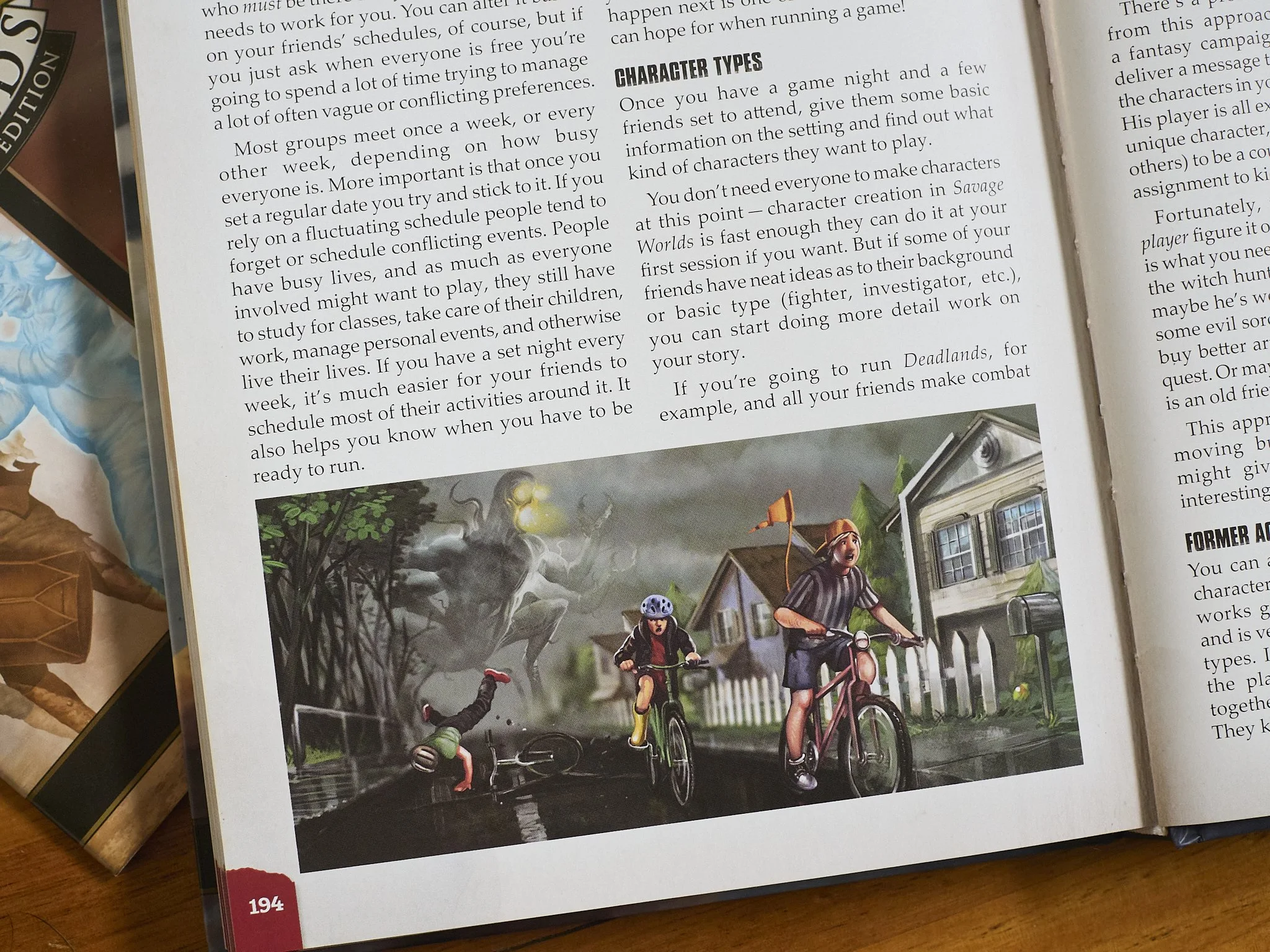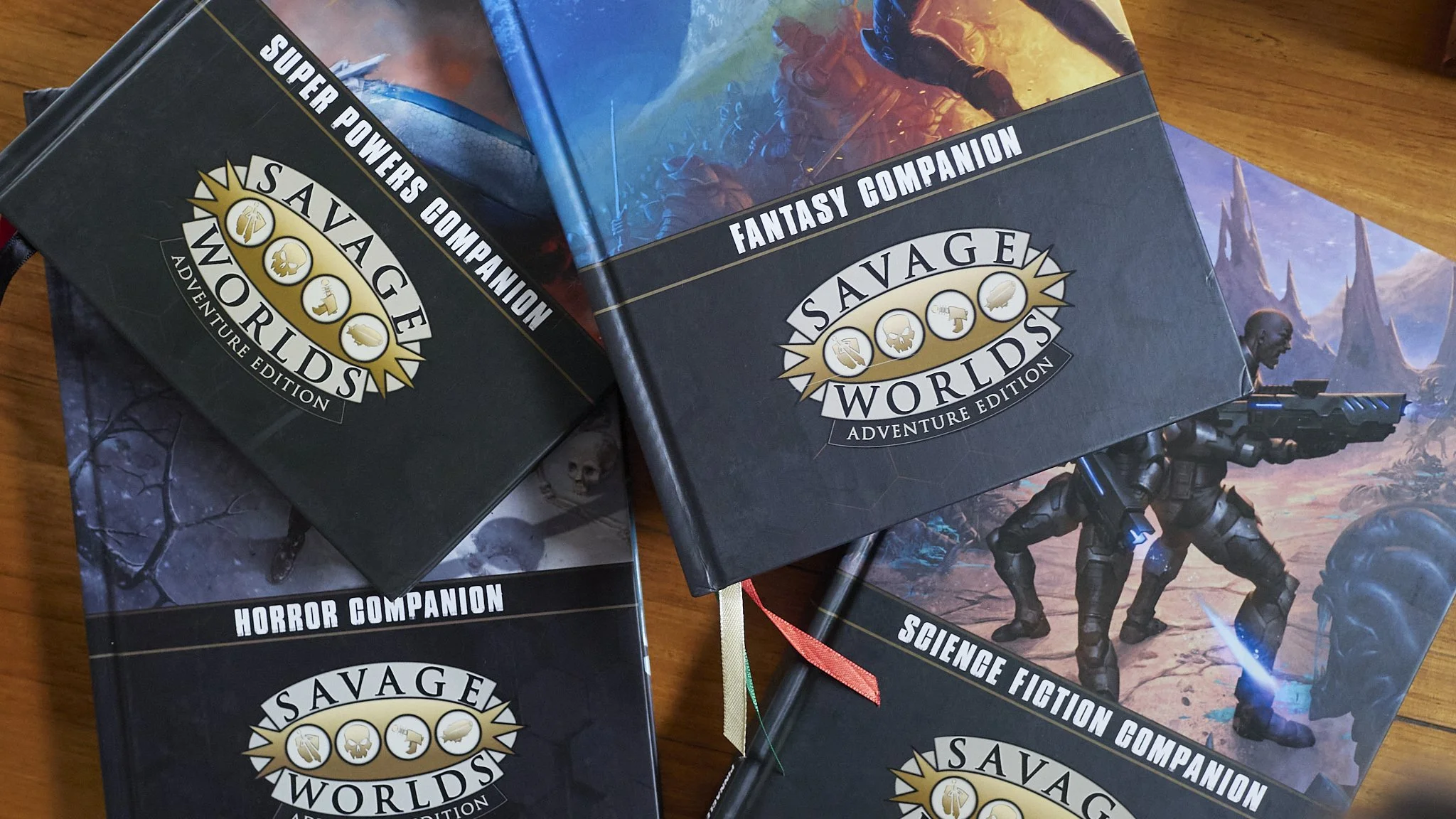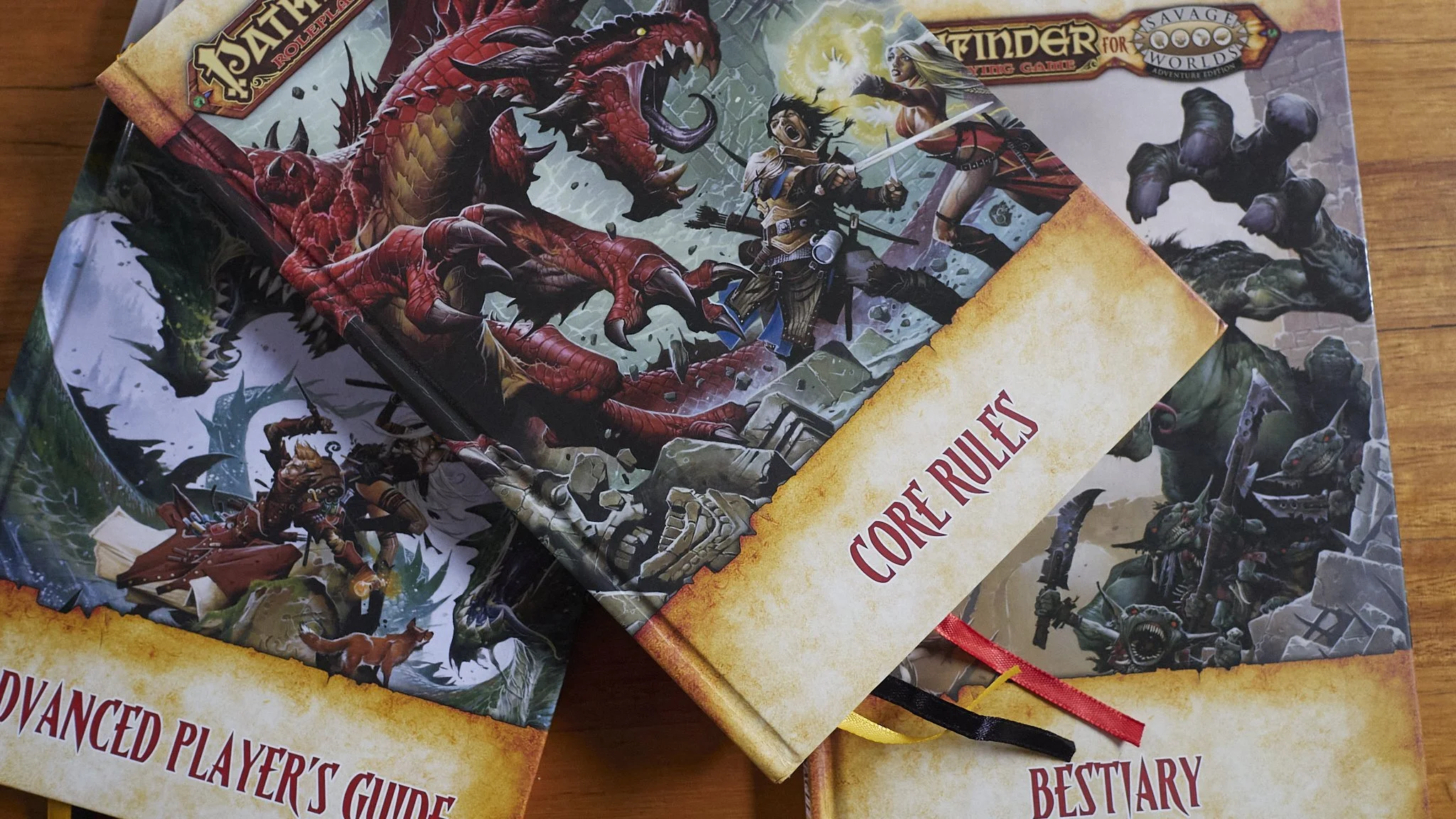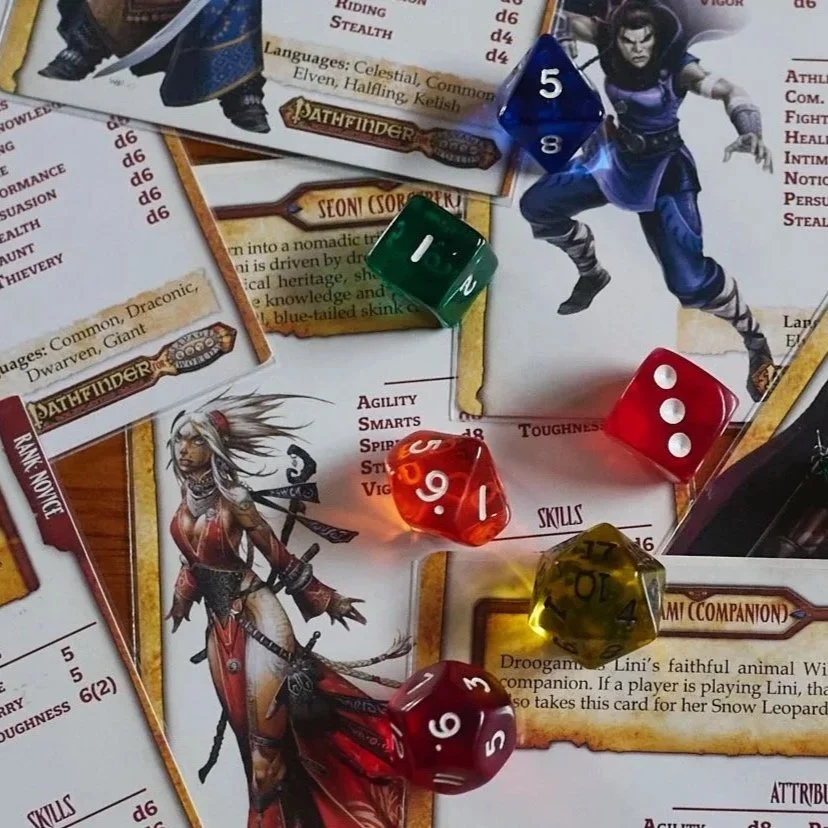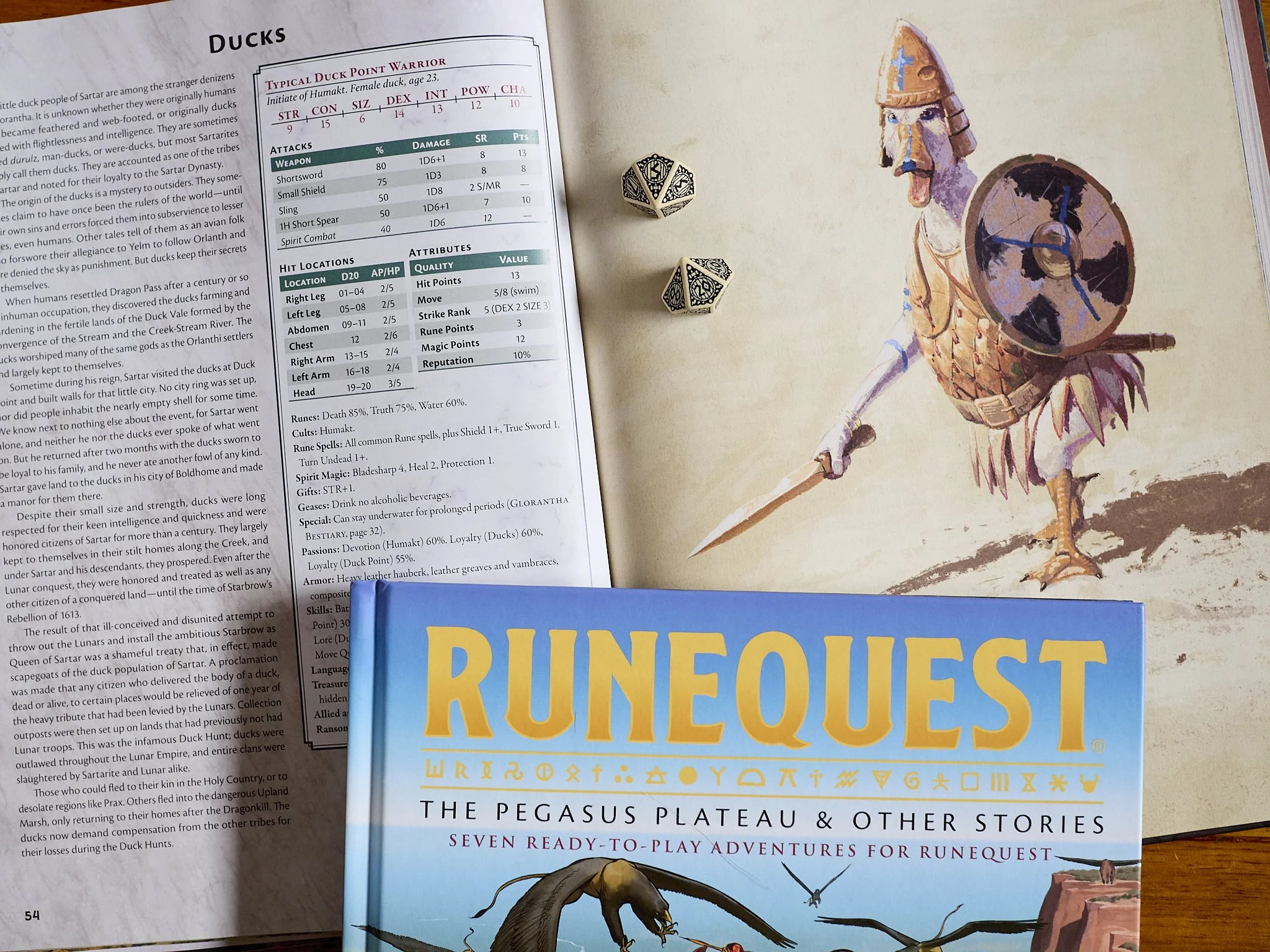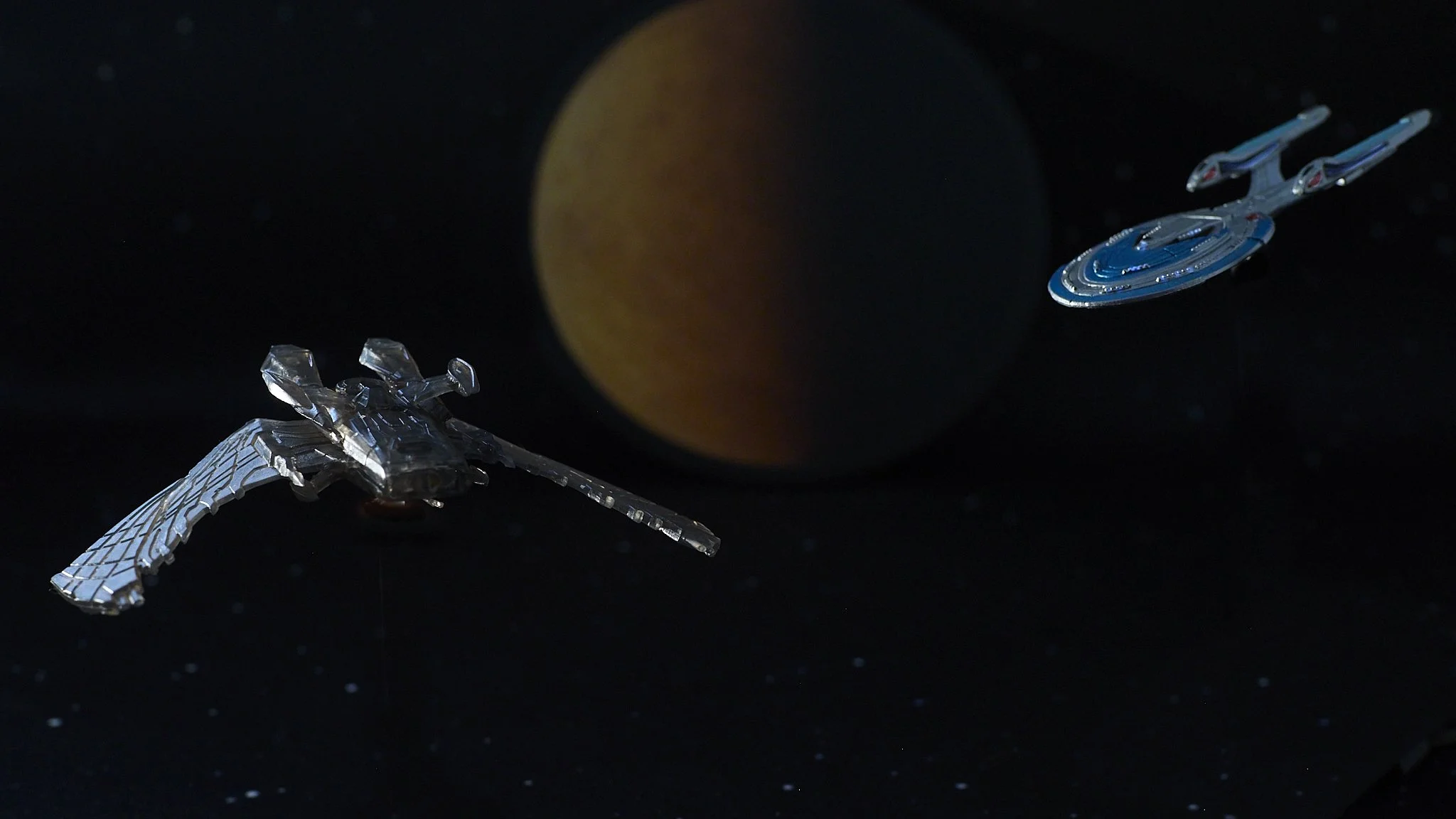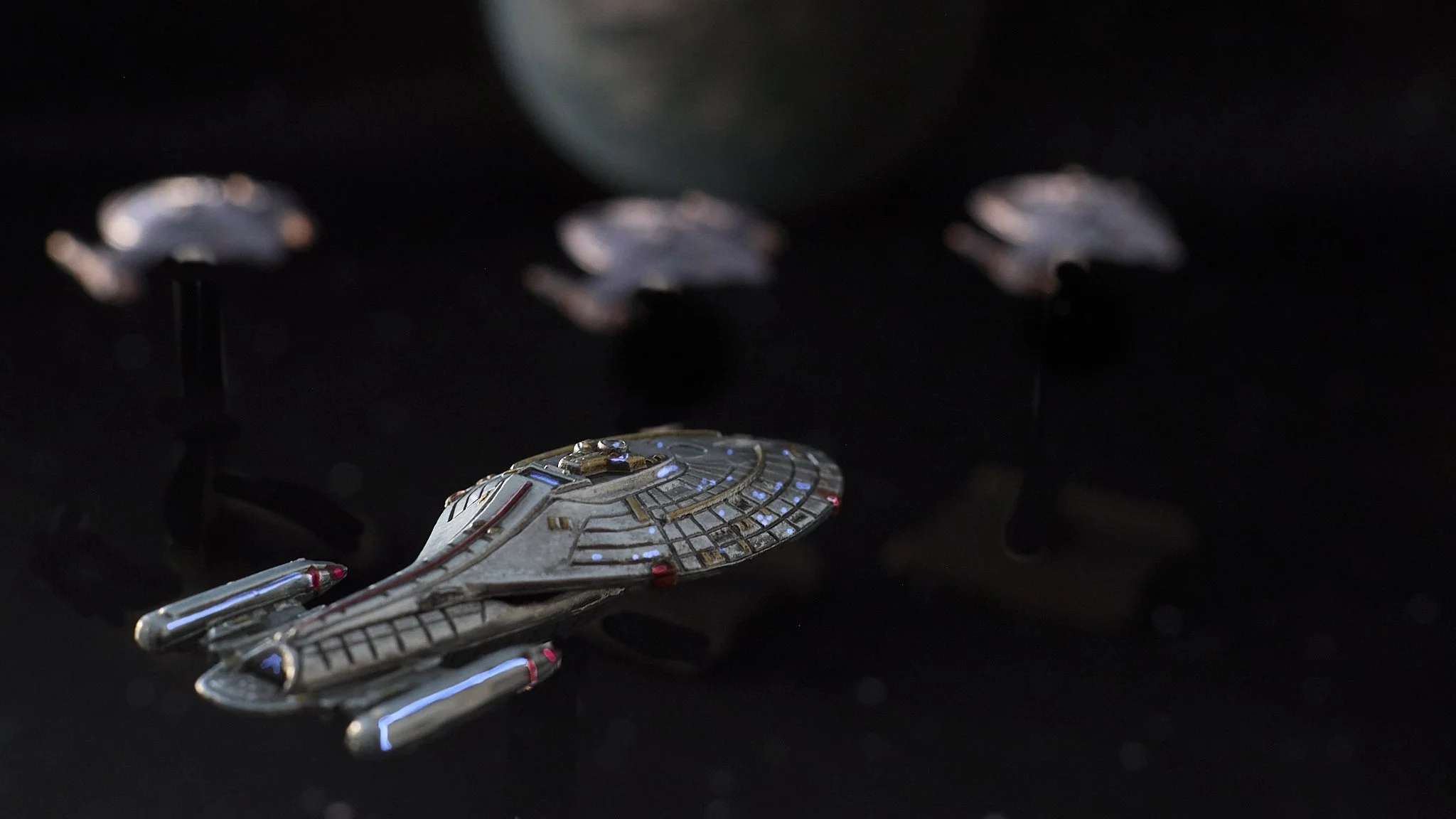Wave 4
Z-95, Tie Defender, E-Wing, Tie Phantom, (Imperial Aces).
The Rebels get a filler and an A-Wing alternate, the Imperials score a super Interceptor and a cloaking wild card.
Now we are into expanded universe ships and the Imperials gain Cloaking. For me, sitting on the outside looking in, the tournament players must have been clawing at the walls every release schedule as the meta changed each wave and builds became more interesting or daunting, depending on your knowledge of the game, but that cycle was also the beginning of the end, even if only a few saw it at the time. For people like me with only a passing interest in Star Wars outside of the movies, we are now into the “I might just stick with what I have” period.
Wave 5
YT-2400, VT-49 Decimator (Tantive IV).
A thin wave, adding more expanded universe large ships and a second Huge ship with Leia and Han Crew and more Upgrades. Two Rebel Huge ships set an expectation for more, but which ones? In the films only Rebel ships are featured, so we expected more exploration into the expanded universe.
This was the time of Turrets vs Swarms, simple and effective.
Wave 6
StarViper, M3 Scyk, IG-2000, (Most Wanted), (Rebel Aces).
The Most Wanted pack was chock-full of goodies for the now separate Scum faction. They got their own version of the Y-Wing, Z-95 and some exclusive ships. The Rebels get the first of many bandaid fixes to earlier ships with the Aces pack, making the A-Wing and B-Wing more attractive.
The Scum are finally separated as the third faction with the “Most Wanted” pack and more ships (even if they and their pilots are quite obscure) and another Mercenary appears. The expanded universe is being plumbed more deeply, the ships becoming meta affecting and “fixes” for older ships are appearing in new products like Rebel Aces.
Wave 7
Hound’s Tooth, Kihraxz, K-Wing, Tie Punisher (Imperial Raider).
Another large ship mercenary, a Scum line fighter, A Rebel heavy bomber with SLAM action and an answering Punisher with a System upgrade. The Raider finally allows 1 on 1 Huge ship battles, the Tie Advanced also gets some help and Palpatine arrives (lethal until nerfed).
At this point, the releases are squarely aimed at the tournament circuit, with answers for each faction for balance, new mechanics (new Actions and manoeuvres even) and of course, more fixes. The meta is very much a slave to the release schedule now, older ships starting to show the strain with fixes a regular thing.
Wave 8
(Force Awaken Core Set), T-70 X-Wing, Tie/fo, Ghost, Inquisitor’s Tie, Mist Hunter, Punishing One, (Imperial Veterans), (Assault Carrier).
The TFA period is added to the earlier time line with no accounting for the timeline differences, with XT-70 and 65’s mixing, Poe and Luke or Kylo and Vader flying together and some other oddness. The tournament circuit respond to a better X-Wing and Tie, the Ghost and Inquisitor’s Tie from the Rebels series make an appearance as well as the last two mercs from The Empire Strikes Back. Imperial Vets make the Interceptor meaner (and prettier) and the Assault Carrier adds some Ties.
If the TFA period was split here, like in 2e, the game may have been able to share different threads and handle new rule additions, then the Republic period could have been added and 1e may have survived and even the simulation pundits would have been happy, but much of the damage was done. In some ways, X-Wing was a slave to the movie release schedule.
Wave 9
ARC-170, Special Forces Tie, Fang Fighter, Shadow Caster, (Heroes of the Resistance), (C-Roc Cruiser).
The TFA period gets some fleshing out with a new Falcon, Poe and a heavier Tie, but the rest of the releases are fringe at best, although the Fang becomes a favourite. The C-Roc gives some life to the Scyk, the Shadow Caster adds a rotating Turret, a sign of the future. The TFA period First Order pilots are mostly generics at this point as the releases are coming before the fiction can fill the gaps.
The Meta is straining now with multiple Jump Masters and other ships people had to research origins for becoming table dominant until nerfed by “official” rules. The JM in particular even needed a new card!
Wave 10
Sabine’s Tie, Upsilon Shuttle, Quad Jumper, U-Wing, Tie Striker.
Rounding out the Rebels with Sabine’s Tie was nice, the rest were Rogue One or TFA releases. The Tech upgrade becomes the new/old period threshold, the ships a mix of “must have” to fringe at best unless you are a competitive player where the best is picked off, the rest ignored.
The playing group is split even more now between casual players who make the older ships they want to fly, relevant again by ignoring the meta and “playing friendly”. The tournament circuit is hard edged, useless ships simply ignored for winning power builds.
Waze 11
Auzituck Gunship, Scurrg Bomber, Tie Aggressor.
The factions are getting more balancing ships, like the Aggressor, an Imperial Y-Wing, Scurrg as the Scum ordnance specialist (but all together too powerful) and the Wookie Gunship for good measure.
More new game mechanics are introduced, making a nonsense of some older ships and muddying the waters even further.
Wave 12
Alpha class Star Wing, Kimogila Fighter, Phantom II Expansion, (Guns for Hire).
Kihraxz and Viper fixes, Harpoon missiles and plenty of well liked upgrade cards make Guns for Hire the hot thing this wave. The elusive Star Wing, a cross between the Lambda and an Apache Helicopter (never actually seen one, the only ship to elude me), Kimogila and Phantom II are a mixed bag adding more mechancis, the last two can still be found on dusty shop shelves.
They are again mostly adjusting balance and filling in the cracks now. The game is healthy enough on the playing circuit, but the end is in sight for many.
Wave 13 (apparently this came before 12 for some reason?)
Resistance Bomber, Tie Silencer.
The needed depth for the TFA period, not that there was still any official period separation in the game.
For a slim time, my game was 5x TFA base sets and the half dozen other TFA ships on clearance.
The playing fraternity are at odds now. The new ships are powerful, but the game is coming apart at the seems.
Wave 14
(Saw’s Renegades), Tie Reaper (second edition is announced).
The last 1e releases are Rogue One fillers and Saw’s comes with an attempt to fix the X-Wing.
Too little-too late, the announcement of 2e and imminent conversion packs kills 1e for most or for some, the game all together. My feeble attempt at controlling the monster, sticking to TFA in 1e was turning out to be a good idea as the conversion kit fit perfectly with my collection and the period was a discreet range in 2e, but I bought a cheap 1e starter and the rest is history.
So, where did it go wrong?
The reality is, competitive needs ruled the release schedule, fated to be I guess by the 100 pt, head to head on a 3x3 mat structure of the game. Collecting ships, playing scenarios, simulating Star Wars and having fun all took a back seat to tournament play.
For many, Wave 6-7 was a high water mark with the release of Scum as a faction and action chains were emerging as the meta currency. Others stayed the course until Wave 10 or later, but for me, if I was buying and playing with the benefit of hind sight and as a simulation gamer with a strong need to play to canon, Wave 3 would have been plenty. Nothing was broken, everyone had their place and there was enough.
What could have been done differently?
If the initial launch had been four or five factions, with the Prequels and Scum factored in, then maybe the scope of the game would have been greater and later rules bloat avoided. I personally would have loved it if pilot cards were separate also, allowing for vastly more variety from the start (like Captains in Attack Wing, but that got well out of hand didn’t it!).
Was 2e the fix that was needed?
You could argue that all that needed doing was a reprint of some cards, dials and upgrades that needed updating or fixing, but instead they started from scratch.
2e was a decent fix, balance was back, you could theoretically fly any ship you wanted and be competitive and many of the miss-steps of the 1e game were removed or reworked, so what went wrong?
Cards without point values or upgrades had a mixed reception, especially when the app needed was twitchy. The flexibility of non-printed values did mean the game could be balanced and re-balanced as needed, but it was also obvious there was a kowtowing to the tournament player, the casual player was a bit lost and therefore lost interest.
Fantasy Flight and later Asmodee could not sell much except conversion kits and offered little new, so sales dropped, but I guess so did R & D, but the reality was, if you came in late and wanted to fill your fleet, you had to turn to 1e ships and conversion packs. A late surge helped but was too late to stem the tide and many realised, the promised re-prints were not to be.
The conversion packs were also rarely perfectly aligned with most players collections, either way too much or too little (usually 3 was the unlucky number). Personally I could have converted my TFA kit almost perfectly, but I went into the earlier period and broke that.
The community was healthy, the game strong and balanced, but the early magic was gone and with it much of the potential for growth. For me, the biggest sign of a failing game was the loss of many of the blogs I liked. SotL is one of the few still up even with little actual play being done.
I miss the rock-paper-scissors simplicity of the original game, so personally I regressed to re-capture a time and feeling I had basically missed first time around. Classic (movie ships), Bare Bones, Skeleton Crew, Aces and Eights, Expanded and Full Noise are all layers of 1e I enjoy, 2e is mostly languishing in reserve.
One fix that has a massive impact is to simply use 2e dials with 1e ships. This balances a lot of ships (more Talon Rolls, S-Loops and generally more speed, or sometimes less).
“Cut and paste as needed, the instructions are on the box”.
It is our game now, all ties with mother have been cut.
For many, especially non-competitive players, the latest take n 2e is a mess, a great big, over complicated, over nerfed, competiton driven mess. The answer according to some is “go back to it’s roots”, more specifically reduce, reduce, reduce.
For example, I personally dislike EPT’s and Mods* and have an allergic dislike for Titles**, feeling they take away from the already represented bespoke abilities of the Pilots and Ships and are the key villains in the exaggerated “action chain” economy of the late 1e game. As proof of this, most were absorbed by the 2e game.
If you look at most 1e power lists, EPT and Mod combo’s are at their core. Soontir and Palpatine (as written) or Han and Chewie/C3-PO/R2-D2 are all less fortress-like without these extras and Pilots like Jake, Tycho or Vader get to do things with Actions that others just don’t. The game feels more like the designers intended. The rock-paper-scissors dynamic meets squad building hijinks limited to call-out cases while simulating Star Wars as we want it.
If like me you have a ton of exquisite little plastic ships, bags of card board collateral and an undying desire to “fly Star Wars”, then what is to be done?
I guess we all need to make our own way.
As I have said above, my jam is reduced upgrade 1e, probably with 2e dials as the easiest way to upgrade older ships (1e dials saved for intro level games). I have lots of ships that are 2e only, so I guess there is a need to do something like the later 2e game, with base cost ships based on Pilot skill and “free” upgrades, but like 1e a lot of upgrade types will be banished. No EPT’s or Mods for a start, just ship and pilot abilities, ordnance and crew of all types (gunners, droids etc).
*We also play “full noise” with all the bits when the mood hits, especially in “Aces and Eights” a 60pt Ace + wingman fighter face-off.
**Especially the generic ones that are blatant fixes and the ones that hint at ship “sentience” and the same goes for Attack Wing.


